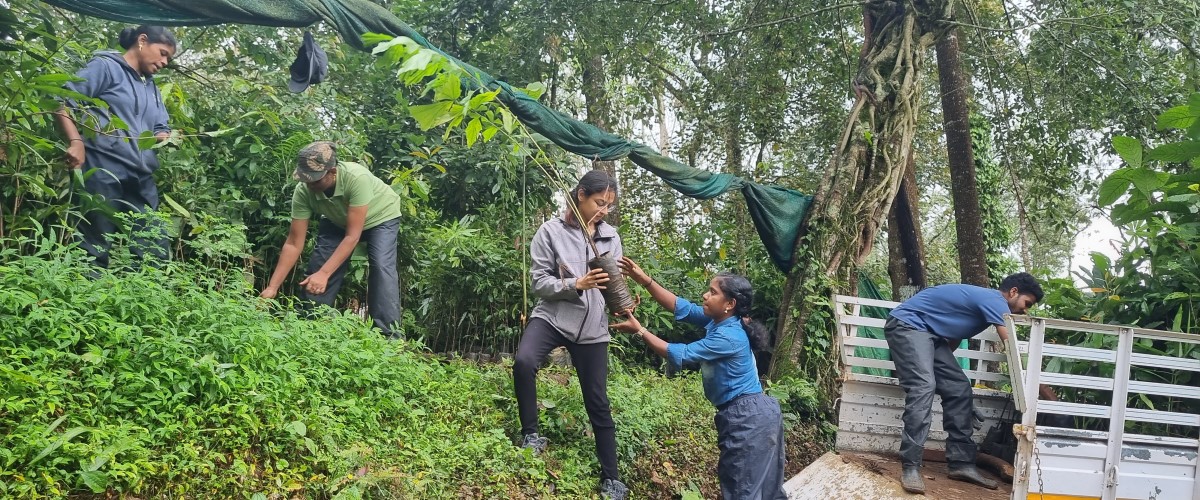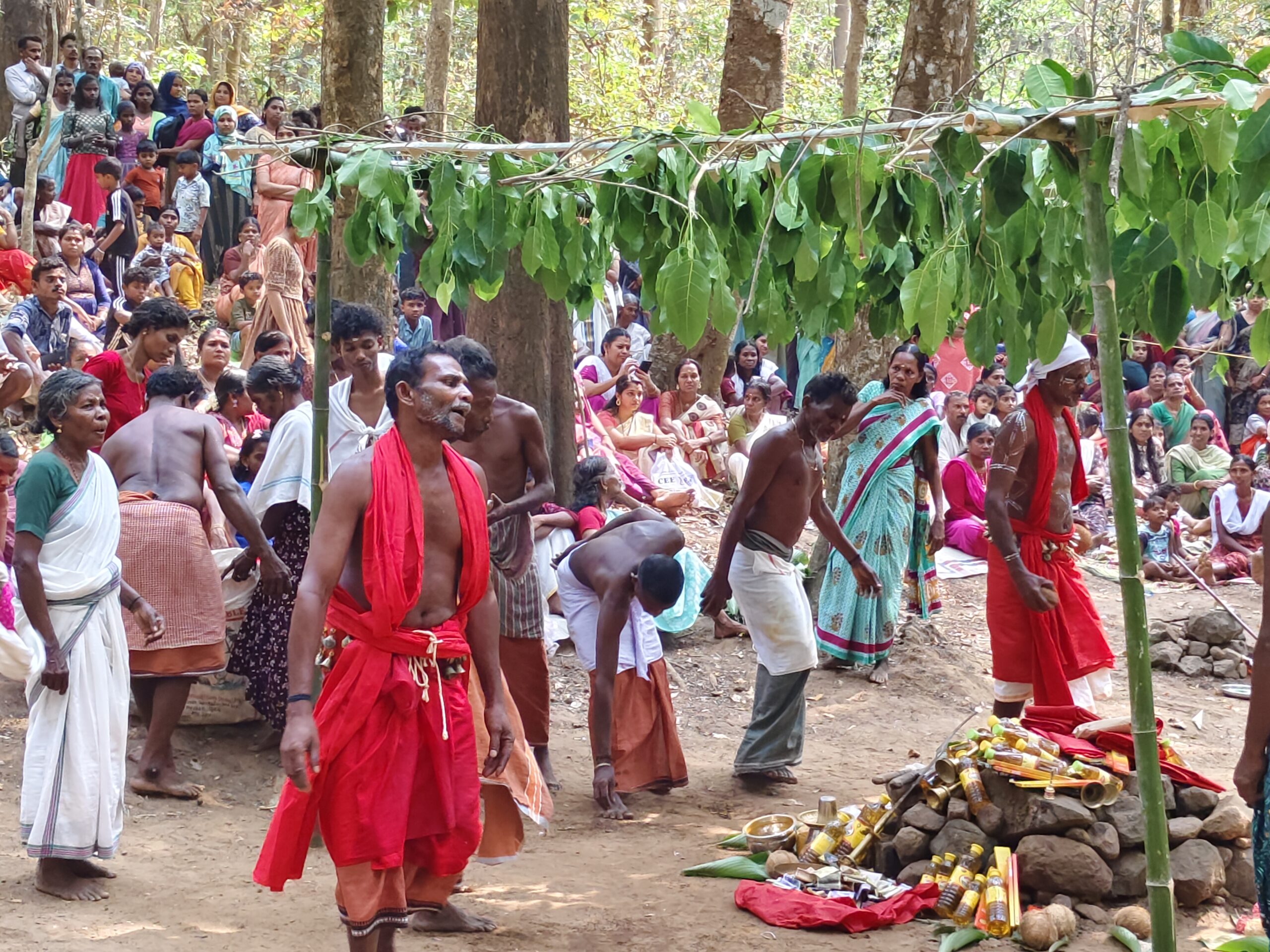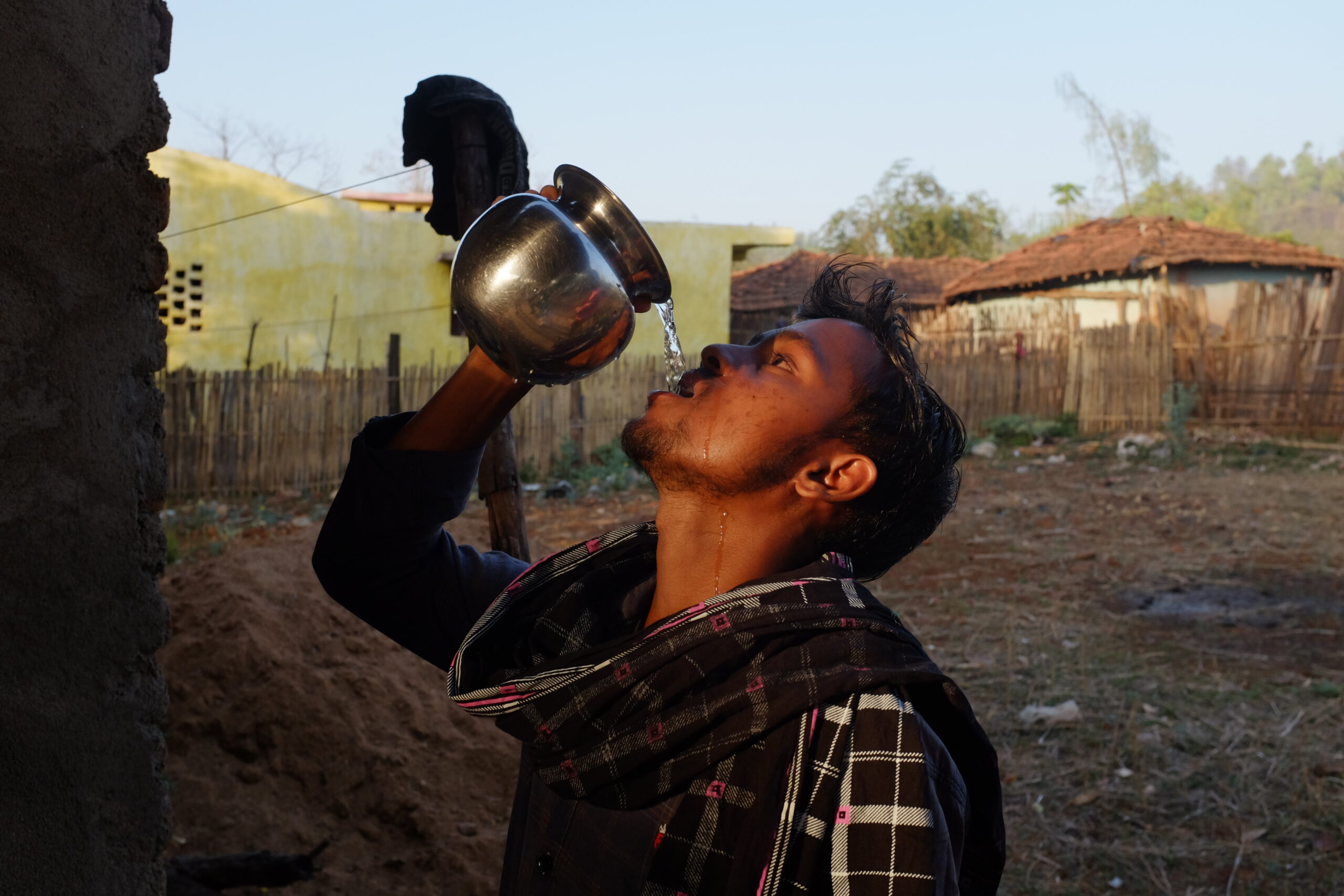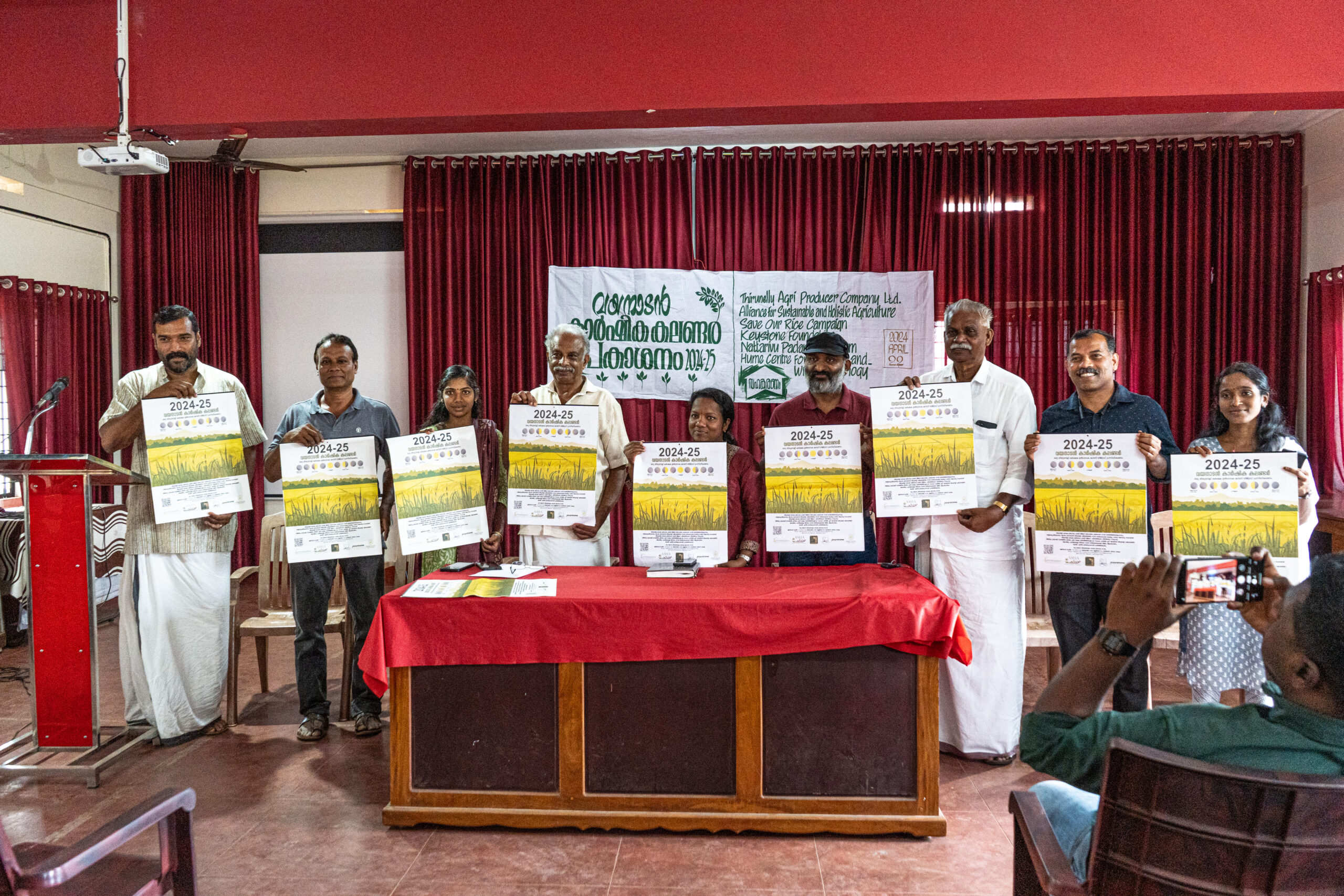June 28, 2023
By Vishnu N.M. & Harshavardhini Angappan
Technical Coordinator – Ecological Restoration (Biodiversity)
Journey from foothills to the plateau
On our way to Valparai, we saw Aliyar Dam, which is located at the foothills of Valparai in the Anamalai hills. Since the monsoon had not yet started, there was only a little water in the dam. The dam was constructed across the Aliyar River as a part of the Parambikulam Aliyar project. It receives water from Parambikulam reservoir through a contour canal and Upper Aliyar reservoir through the hydraulic power station.
From the foothills of Valparai, we were looking out the window, noticing how the forest type was changing from dry deciduous to wet evergreen with the elevation and climate. At one point in time, we also noticed grass on rocky slopes with sign boards saying ‘Nilgiri Tahr crossing zone’. We were looking out for one, but all we could see was a picture of Tahr on these sign boards!
NCF interpretation centre
Before reaching Valparai town, we got off in Iyerpadi to visit NCF’s Interpretation centre. This centre is open to the public. We met the person in charge of this centre, Stella Akka, and Kshama here. Kshama explained the flora, fauna, and indigenous people of the Valparai plateau, along with the work done by NCF in this landscape.
The Valparai plateau spreads over about 220 sq. km. and ranges from 700 m to 1400m. It is located in Anamalais and is surrounded by Anamalai Tiger Reserve, Sholayar Reserve Forests, Chinnar Wildlife Sanctuary, Iravikulam National Park, Parambikulam Tiger Reserve, and Chalakudi Vazhachal Reserve Forests, where continuous patches of tropical wet evergreen forest are still found. During the time of British colonisation, these forests were destroyed on the plateau to cultivate tea. Now there are fragments of these forests that demarcate the estate boundaries or are used as water sheds.

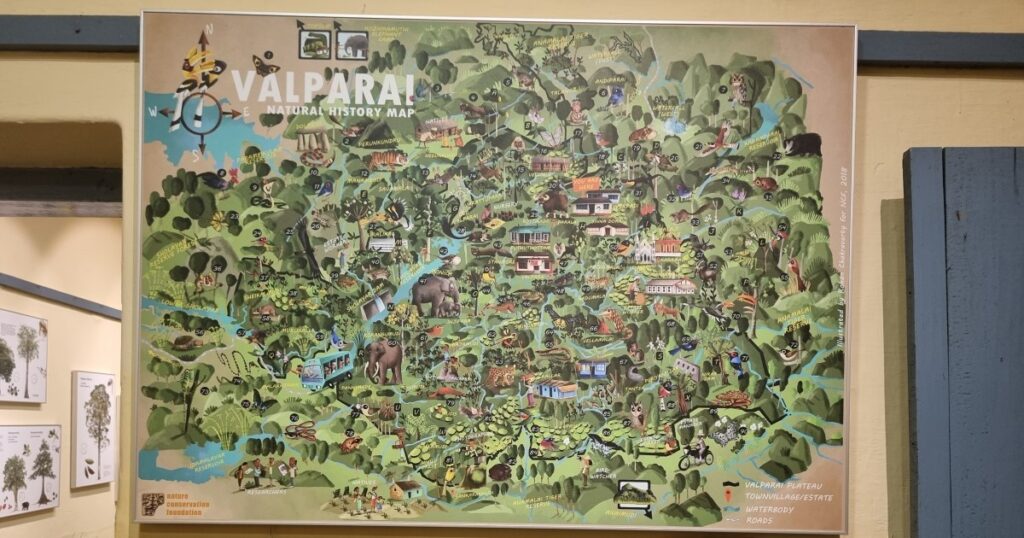
Natural history map illustrated by Rohan Chakravarthy shows how the plateau is surrounded by reserve forests and has a wide diversity of flora and fauna.
These forest fragments are owned by companies like Parry Agro, Tata Coffee, Woodbriar, etc., as part of their tea estates. NCF does the restoration of these forests with an MOU signed with these companies. These forests are restored for wildlife to use as resting grounds during the day and these animals use tea estates to migrate during the night. This reduces human-wildlife conflicts on the plateau. Another main reason to work on the plateau is that it is home to 90 species of fauna and 24 species of flora.
Rainforest nursery
The next morning, we visited their rainforest nursery with Kshama, who oversees the nursery and coordinates restoration work.

There are approximately 150 species of plants and more than 20,000 saplings in stock here. The species include Cullinia exarillata, Palaquium ellipticum, Canarium strictum, etc., among others. All these plants are arranged from section A to section E depending on their growth, where section A has seedlings and section E has plants ready for out planting.
First, we were surprised to see seeds sown directly in bags instead of in mother beds. When asked why, Kshama told us that these plants are going to be in the nursery at least for 4 years anyway, so they plant them directly in bags and transplant them to bigger bags when they grow bigger. Another new learning was to hear that the nursery is not fenced and is open for herbivores like elephants, sambar deer and gaur. To prevent too much damage by herbivores and pests, they have kept their plants in mixed rows.

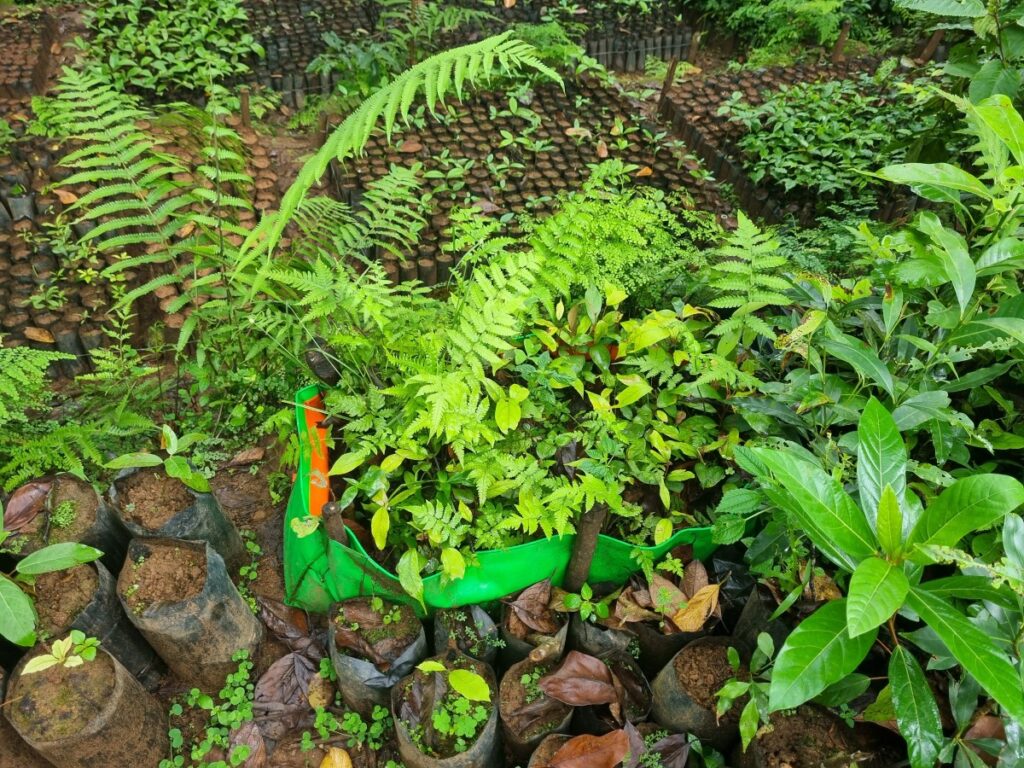
Giving life to the seeds
Most of the plants propagated here are from seeds collected from the roadside or edges of forests. After collecting, these seeds are cleaned thoroughly before sowing in bags. They are not dried before sowing, as they think it might affect viability. While sowing, they are not deeply sown in the soil, as, out of experience, they have seen seeds rot when deeply sown. The soil mixture used in these bags has 3 parts soil that is sourced locally, 1 part cocopeat, and 1 part biocompost. Some of these bags with seeds of certain species are kept in cages to prevent rodent and monkey attacks. We understand one new thing from Kshama: soil and sunlight are not essential for seed germination, but moisture and warmth are required. The Elaeocarpus seeds were kept in a bucket with leaf litter ( since these seeds took a long time to germinate, and the germination percentage was very low). Another activity that they do in this nursery that grabbed our attention is the germination study that is done by varying the substrate and amount of shade.
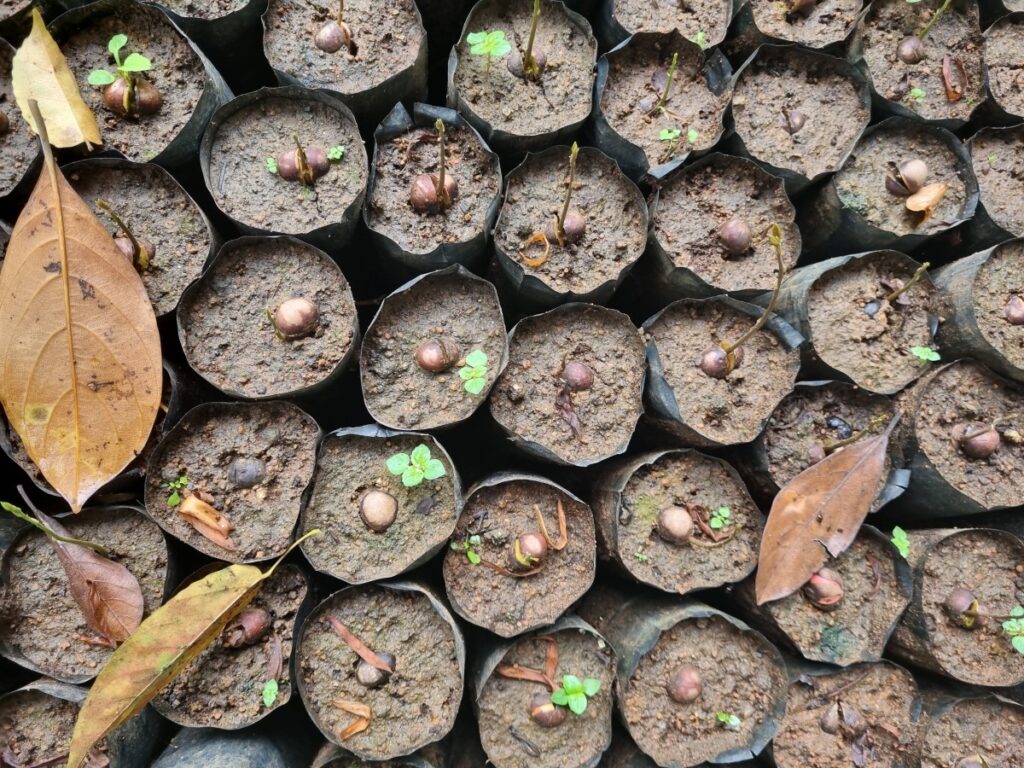
Seeds are sown at shallow depths in grow bags.
Restoration
After spending some time in the nursery and loading plants for restoration, we left for the restoration site called Injiparai bus stop, where we met senior scientists, Dr. Divya Mudappa and Dr. T.R. Shankar Raman. They explained to us how restoration is done in these rainforests. Restoration in a forest fragment at a particular elevation is informed by studying the vegetation plots in benchmark sites inside reserve forests found in the same elevation range. These benchmark sites are also used to assess the degree of degradation in the forest fragments.
Before planting on a particular site, invasive plants like Lantana camara and Chromoleana odorata are cleared, and pits are dug in rows. While planting, the plant is dipped in water to keep the soil saturated with water in case the rain fails. When planting in the pit, the soil is mixed with manure and a pinch of phosphate rock. The plants are then placed in the pits, and the pits are covered with soil. Leaf litter is used to cover the top of the pit. Once planting is done, the plants are tagged just to be identified at the time of monitoring.


Plants are tagged and often kept in cages to keep rodents and monkeys away.
Monitoring
Both in the benchmark site and in the forest fragment, between 10 and 15 vegetation plot assessments are done. For assessing the forest using vegetation plots, 20m x 20m plots are measured, and inside the plot, all trees with a GBH greater than 30 cm are selected, whose height and width are measured and noted. Within this plot, another plot is measured at 5m x 5 m, and the height and germination of all the plants inside this plot are measured to know natural regeneration. This monitoring is done before restoration and after restoration, as well as in control plots at the benchmark site and in the restoration site (BACI: Before, After, Control, and Intervention). By doing vegetation plot assessments, we can understand the structural parameters of the forest, like density, diversity, and canopy cover. Also, we can understand functional parameters like natural regeneration. With these data, we can calculate other parameters like carbon sequestration.
Apart from monitoring using vegetation plots, they are also doing photo monitoring, where using a camera, they take photos of a site before and after restoration with a reference object in the photo frame. When taking photos inside the forest, they make sure the line of sight is clear while taking the photo and there is someone or something visible at the end of the line of sight.
Other monitoring activities they do are long-term monitoring, in which they study forest dynamics using dendrobands and environmental gas monitoring, and a monthly phenology study in seven trails. Apart from these, they also do cost-benefit analysis of restoration in abandoned coffee plantations where they have plots for control, only seeding, seeding, and weeding, and only weeding to test the efficiency of these methods.
Challenges for restoration
Both existing trees and trees that are planted for restoration are cleared for temple festivals. Planting is done during the monsoon season. If there is less rain, it would affect the plant growth. Invasion of the exotic plants is the other problem some restoration sites abundantly grow the invasive species like Senna spectabilis, Lantana camara etc.
How can we apply the knowledge we got from Valparai to the Nilgiris?
- In our Panaparai restoration site, we can use the nearby shola forest patch as a benchmark site to inform restoration near the stream and in the valley.
- We can have a control plot inside the forest patch and also in the restoration plot where we can study the structure and composition of the forest using vegetation plot assessment.
- ● We can also use photo monitoring to monitor the changes both in the control and in the intervention sites. We have also taken drone photos of the plot, which can be used for photo monitoring.
- Apart from these, we can also do germination studies for species found at different elevations.

